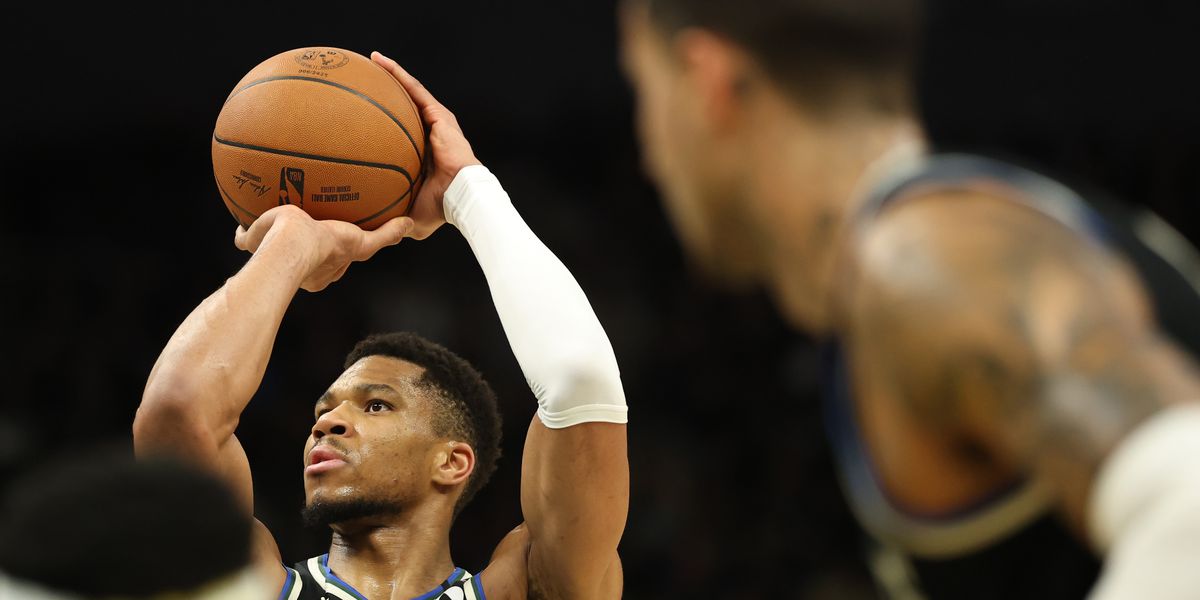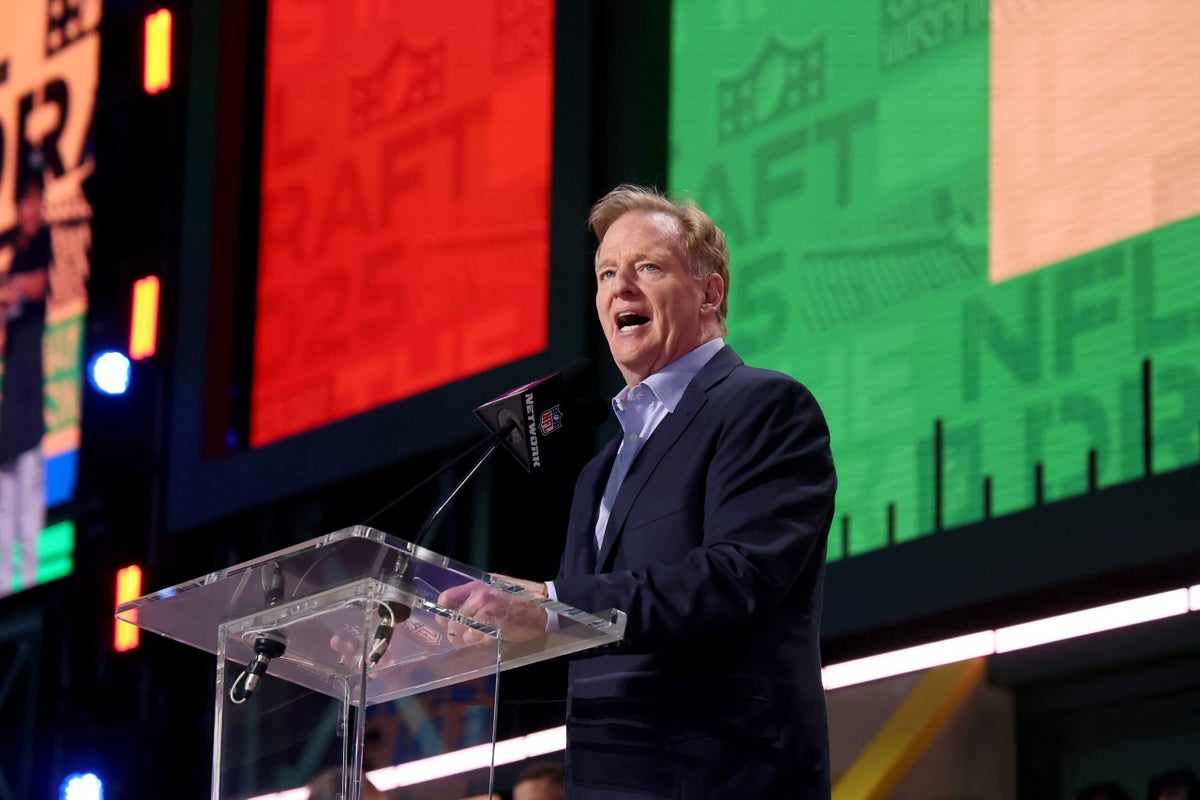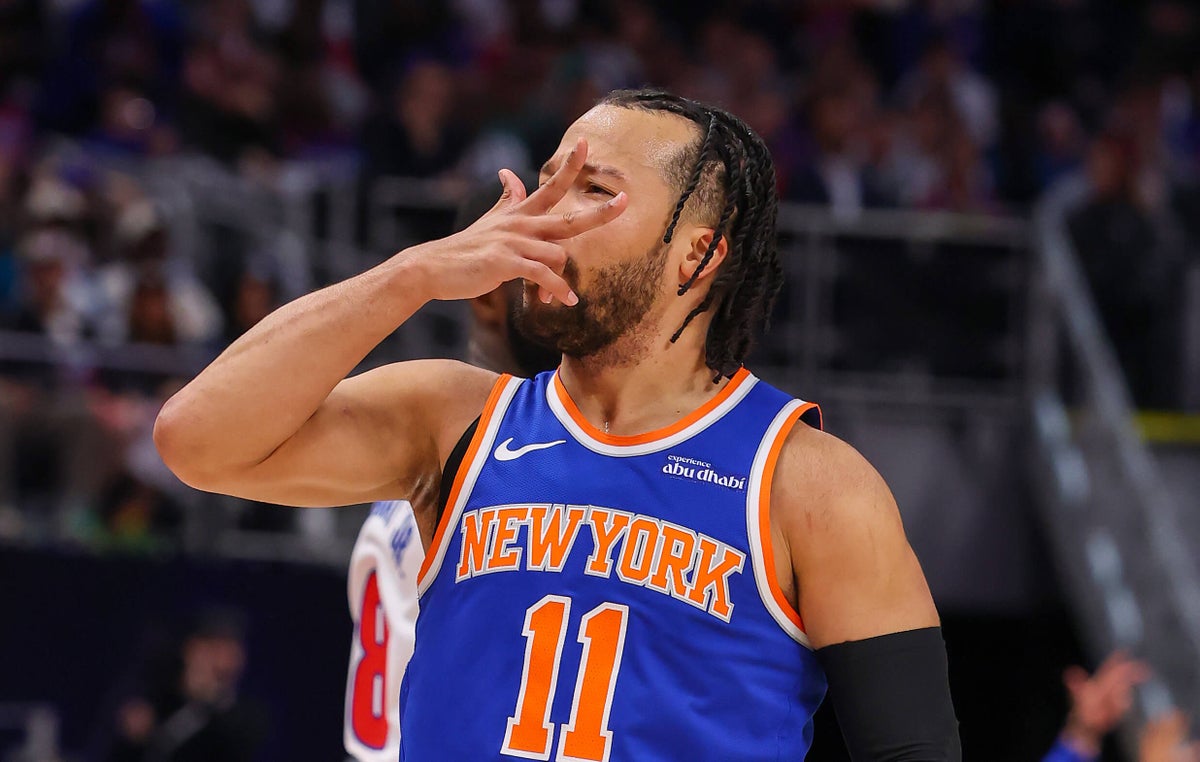
The Brooklyn Nets, amid their preparations for their most consequential NBA Draft since moving across the Hudson River, get to watch the postseason from home for the second year in a row.
We knew this would be the case before their 2024-25 campaign even kicked off, but now, there is a surprising, Greek layer of intrigue. The true question facing Brooklyn and their offseason, aside from where their lottery pick will land on May 12, is if they’re actually serious about this Giannis Antetokounmpo thing.
Antetokounmpo did not seem long for Milwaukee even before 34-year-old Damian Lillard suffered a torn left achilles, all but ensuring yet another first-round loss…
Just in: Milwaukee Bucks star Damian Lillard has been diagnosed with a torn left Achilles tendon, sources tell ESPN. MRI today revealed the severity. A devastating end to his season. pic.twitter.com/ysZ0nw8gxW
— Shams Charania (@ShamsCharania) April 28, 2025
Lillard’s legendary career deserves many glowing eulogies that will hopefully prove premature, but this is not one of those. Brooklyn, as a rebuilding team that controls all available cap space for the upcoming offseason, is a vulture, here to pick on the remains of the Bucks if it so entices them.
So what should Brooklyn’s early takeaways from the 2025 NBA Playoffs be? And will those takeaways further entice them to go after Antetokounmpo, or will they scare General Manager Sean Marks away from the home run swing?
The Possession Battle
Let’s start with something Nets Head Coach Jordi Fernández will absolutely love.
Just halfway through one round of this postseason, it’s clear the possession battle is as important as it’s ever been in the NBA. By my casual calculations, through 30 playoff games, teams that win the possession battle* are a whopping 22-5, with three ties.
*If you had three more offensive rebounds than your opponent, that counted as three more possessions. But if you turned it over three more times than your opponent, you were back to neutral.
Fernández, as most coaches do, harped on the value of winning extra possessions all season long. But don’t take it from him, take it from old friend Kenny Atkinson and his thoughts on the Nets prior to a February matchup.
“They are aggressive. And it’s translated to, they’re turning teams over like crazy. And then the flip side of that offensively, like a lot of young teams, they attack the offensive boards. So they’re going for the possession game, full out, and it’s translating to wins. So, really a ton of credit to Jordi and the players over in that locker room. Really, really impressive … just real credit to him.”
The 3-point revolution and subsequent “pace-and-space” era taught NBA teams how to maximize possessions. Corner threes, layups, avoiding middies early in the shot-clock or after attacking closeouts, you know the drill. Teams went small, acquiring players who could thus maximize possessions and cover space to prevent the opponent from doing so.
Now that teams are clear on how to maximize possessions, the natural next step was and is to create more of them. Oklahoma City committed the fewest turnovers while forcing the most, and boom, they’re 72-14 including the playoffs.
Take Tyrese Haliburton, who is the most overrated player in the NBA if you listen to the rest of the league. I get it: His opponents see the max contract, the All-NBA nod, and none of the bag work to go with it. Haliburton does not cook many defenders in isolation, and he’s easier to stay in front of than some of his contemporaries; you rarely see a highlight dunk or a defender on the floor.
But it’s a ridiculous take because Haliburton’s ability to handle the ball constantly while committing so few turnovers gives Indiana’s offense such a high floor. If an advantage isn’t there, he doesn’t force the issue, and yet, he’s able to fire the ball across the court, putting his teammates in great spots…
Though Haliburton is rocking just 41/29/75 shooting splits, he’s also carrying Indiana to a monster 120 offensive rating on a 32% usage rate against a decent Milwaukee defense that finished 12th in the NBA this season.
Perhaps all this makes Brooklyn more inclined to give Day’Ron more than the $10 million annual value that’s been linked to his game. In analyzing his season, we noted that offensive rebounding is a much more valuable skill in 2025 than it was at the start of Sharpe’s career.
Maybe Keon Johnson’s 2025-26 salary becomes guaranteed thanks to his ability to force turnovers, or Trendon Watford dons a different uniform because he can’t avoid them as a ball-handler. Just maybe, Brooklyn regards Cam Thomas’ offensive profile more warmly than we might think, highly valuing his ability to avoid turnovers even if he does so by taking tough shots.
The Weak Link Era
Owen Phillips, whose Substack The F5 is a fantastic resource for nerdy NBA fans, recently wrote here about the NBA becoming a “weak link” sport, and I’ve plucked some relevant passages:
A strong link sport is one where the team with the best playerusually wins. In basketball terms, that means if you’ve got Michael Jordan or LeBron James on your team, you usually win. That’s different from soccer, which the authors classified as a weak link sport. In weak link sports, the team without the worst player usually wins.
He ultimately that the NBA has become a weak link sport in the past decade or so, and that this really shows up in the postseason:
In the postseason, poor defenders are mercilessly hunted on one end while reluctant shooters are blatantly ignored on the other end. It doesn’t matter how good a team’s best player is if their worst player is consistently forcing them to defend or attack 4-on-5. A team’s worst player can all but cancel out the impact of its best player.
Modern defensive schemes require five defenders to be on the same page, rotating on a string and covering for each others mistakes at a moment’s notice. One weak link in the chain renders all the previous defensive rotations null. It doesn’t matter how good of a one-on-one scorer they are on offense if they look like food to opposing ball-handlers when they’re on defense.
After a week of the 2025 NBA Playoffs, it’s hard to disagree with Phillips.
Kris Dunn has pulled off outrageous feats on defense through four games of Nuggets-Clippers — which I’m covering in a freelance capacity. L.A.’s chances of covering the pivotal two-man game between Nikola Jokić and Jamal Murray rely on Dunn, and the former Providence star is finally seeing well-earned praise for his defense…
And yet, with the money on the table in Game 4, he played just 21 minutes while not-so-coincidentally posting a game-worst plus-minus.
Denver’s defensive increasingly revolved around how to most flagrantly disrespect Dunn, and it worked. They were able to trap the Harden-Zubac pick-and-roll, and with Dunn’s defender, meet Zubac incredibly early on the catch, sometimes above the free-throw line. Oh, and when they doubled Kawhi Leonard, you can guess where it came from.
Or, take Minnesota’s thrilling Game 4 victory over the Los Angeles Lakers, where weak links compounded.
Late in the game, L.A.’s offense exclusively featured Luka Dončić looking for the weakest on-ball defender on the floor, and only finding Naz Reid or Julius Randle. Not a bad deal for Minnesota, two big, capable bodies that forced Dončić into tough shots and limited how much their teammates had to help. Their “weak links” were frequently targeted, but held up wonderfully.
So, why didn’t LeBron James touch the ball more, if Dončić attacking switches led to just 19 Laker points in the fourth?
Well, the 40-year-old was totally gassed from a tremendous defensive performance…
In last night’s game, LeBron had one of the better defensive performance of his playoff career, which is saying A LOT:
– 3 steals, 3 blocks, 2 fouls
– 9 def. rebounds, 2 deferred, 1 boxout
– 2/7 allowed at the rim
– 3/11 allowed on 2P shots
– 1.4 miles run defensively pic.twitter.com/2Y4x6Ykp5H— moose / lebron is 1st-team (@roadto80pct) April 28, 2025
…in which he saved a Lakers team that, thanks to Jaxson Hayes’ four uninspiring minutes, needed to play the same five guys the entire second half. Those five guards and wings switched everything, but their weak links were worse than Minnesota’s.
Reaves was meh, Dončić was terrible, and James constantly had to play Superman at the rim, which was all fine and well, but Los Angeles really missed his offense on the other end. In sum, Minnesota would not have won that game without an Anthony Edwards explosion, but their supposed weak links being pretty damn strong saved them too.
The Giannis Question
Back to the top.
Giannis Antetokounmpo is averaging a stupid 34/14/5 through the first four games of his ninth postseason. Under a preposterous offensive burden, his defense has slipped a tad, but the passing is definitely better than you think. And yet, I don’t see how the Brooklyn Nets build a championship-roster around the unquestioned superstar if they trade for him this summer.
There is the obvious timeline question, with Antetokounmpo set to turn 31 at the beginning of next season, while the only current Brooklyn Net whom we know definitively can start on a great playoff team is Cam Johnson.
In this weak link era, it may be a near-impossibility for Sean Marks to field nine playoff-worthy dudes in the next couple seasons.
Firstly, Brooklyn would have to limit the draft compensation Milwaukee would inevitably ask for spades of. Perhaps the Nets get to keep two first-rounders this season, and draft, say, VJ Edgecombe with the early pick and Ryan Kalkbrenner with a later one. Maybe that’s 30 minutes of solid wing play and a viable backup big.
Marks could then hit a homer the old-fashioned way, by using his cap space in free agency. Is Nickeil Alexander-Walker a strong starter hiding in plain sight? Is Santi Aldama or Jonathan Kuminga something more? Perhaps Myles Turner is signed as a perfect floor-spacer next to Giannis, while the Claxton is traded for a couple lower-end rotation guys.
I’m loosely spitballing here, and it’s completely unsourced, to be clear. But any way you draw it up, the Nets would have to create an entirely new team around Antetokounmpo to even avoid the Play-In Tournament in a weak Eastern Conference.
As Marks said in his exit interview: “If you’re going after max-level talent, they have to automatically and absolutely change the trajectory of your team. This can’t be like let’s go get this [guy] and lock ourselves into being a 6-7 seed. When we go all-in, you’re going in to compete at the highest level and contend.”
In 2025, Antetokounmpo is the highest level of player alive. But if his Milwaukee Bucks and these NBA Playoffs have taught us anything, that’s not enough by itself to bring a team to the highest level.
That is the lesson the Brooklyn Nets should learn form these playoffs.


